One of our three Green Bank-based millimeter-wave telescopes, a 12-foot dish, was used as a testbed for future, larger-scale telescopes from 1963 until 1967. It was an aluminum dish coated in a thin layer of gold, and mounted on a modified surplus radar mount behind the Janksy Lab. In this photo are, left to right, Frank Low, Tom Carpenter, Arnold Davidson, and Omar Bowyer.
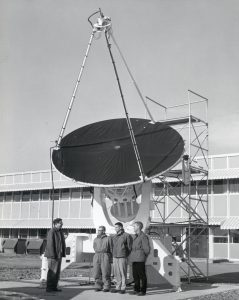
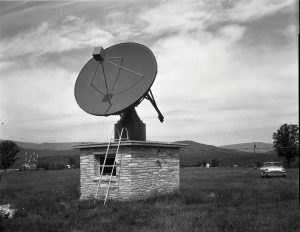
Green Bank’s first 12- foot MM-wave telescope
Our first millimeter-wave telescope was this 12-foot dish in Green Bank run by Dr. Frank Drake. The small stone building underneath held the telescope’s control equipment.
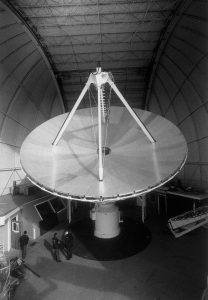
Tuscon’s 12-meter Telescope
In 1968, a 36-foot telescope was one of the first major millimeter-wave radio telescope, and it was run on Kitt Peak in Arizona. Its main purpose was to hunt for the chemistry of space, and in many ways is considered astrochemistry’s first workhorse. This photo was taken in January of 1984 after an 18-month hiatus in observing, during which it got a higher-accuracy surface. After this upgrade, the telescope became known as the 12-meter.
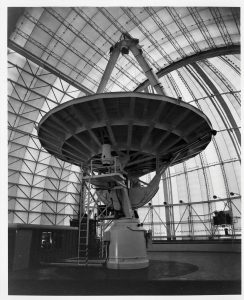
The 36-foot (12m) telescope under cover
The 36-foot (12m) telescope on Kitt Peak in Arizona was used from 1968 through 2000. It is famous for detecting dozens of molecules in space by observing the Universe in millimeter waves. Here we see the telescope resting under the cover of the building above it.
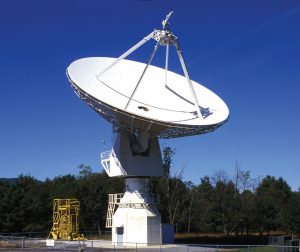
Clear Skies over the 20-meter
The 20-meter telescope arrived as a guest at Green Bank in 1994. It was built by RSI and installed by the US Naval Observatory as a member of its various Earth observing programs. In 2000, USNO cutbacks shut it down, but we kept it running to use as a receiver-testing telescope. In 2012, it became the first radio telescope in the UNC’s Skynet project of remotely-controlled educational telescopes.
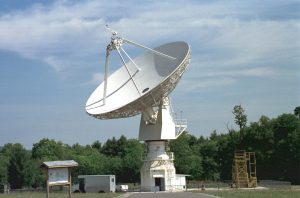
The first radio telescope used for Education
The 20-meter telescope arrived as a guest at Green Bank in 1994. It was built by RSI and installed by the US Naval Observatory as a member of its various Earth observing programs. In 2000, USNO cutbacks shut it down, but we kept it running to use as a receiver-testing telescope. In 2012, it became the first radio telescope in the UNC’s Skynet project of remotely-controlled educational telescopes.





